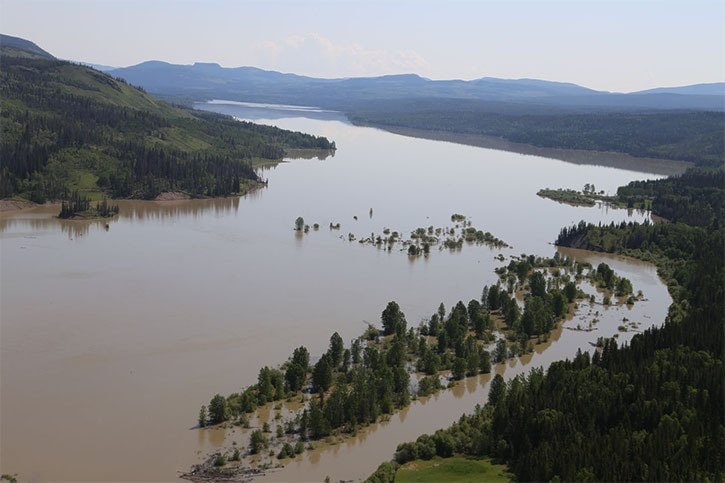A new initiative called the ‘Nechako watershed roundtable’ gathered decision-makers in Prince George to discuss the future of the Nechako watershed.
The watershed is facing significant challenges, including impacts of the mountain pine beetle epidemic and salvage logging, climate change, and the diversion of water.
Judith Guichon, Lieutenant Governor of B.C., was a special guest at the roundtable’s public launch on Oct. 21, 2015, in Prince George. The inaugural meeting took place the next day.
The roundtable included representatives of First Nations, local governments and other organizations with responsibilities and interests in the watershed. Participants were educated on the health of the Nechako watershed and were provided with information on key watershed issues.
Cheslatta Carrier Nation, one of the members of the roundtable, has great interest in these discussions.
Cheslatta has been involved in high level discussions with both B.C. and Rio Tinto Alcan to come to terms on a long-term solution to the water management issues in their territory.
Cheslatta has had to deal with a yearly flooding since 1952, which has caused over 60 graves to be washed away. To solve this issue, Cheslatta leaders proposed the construction of a cold water release facility at Kenny Dam.
Mike Robertson, Senior Policy Advisor for Cheslatta Carrier Nation, said the construction of the cold water release facility still remains a “high priority.”
“Negotiations continue,” he said.
The annual flooding of the Cheslatta system is due to Nechako reservoir’s elevation management flows. Since the construction of the Kenney Dam in 1952, and the creation of the Nechako Reservoir, the Cheslatta Lake and River system has been utilized as a spillway channel, linking the reservoir with the Nechako River.
Different organizations began a dialogue in 2012 to solve key Nechako watershed issues, coming together informally as the Nechako Watershed Alliance. In the spring of 2015, participants decided to form a watershed roundtable that includes local, provincial and First Nations agencies, as well as academic and research communities and the general public.
The composition of the panel is expected to evolve, and the roundtable intends to engage industries working within the watershed. Guided by a core leadership committee, the Nechako watershed roundtable intends to create a strategic plan to prioritize projects.
